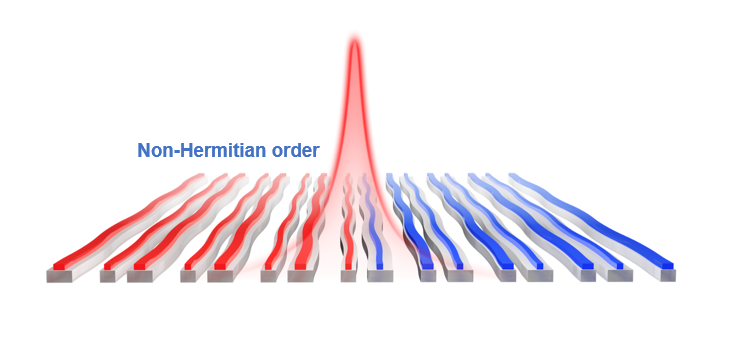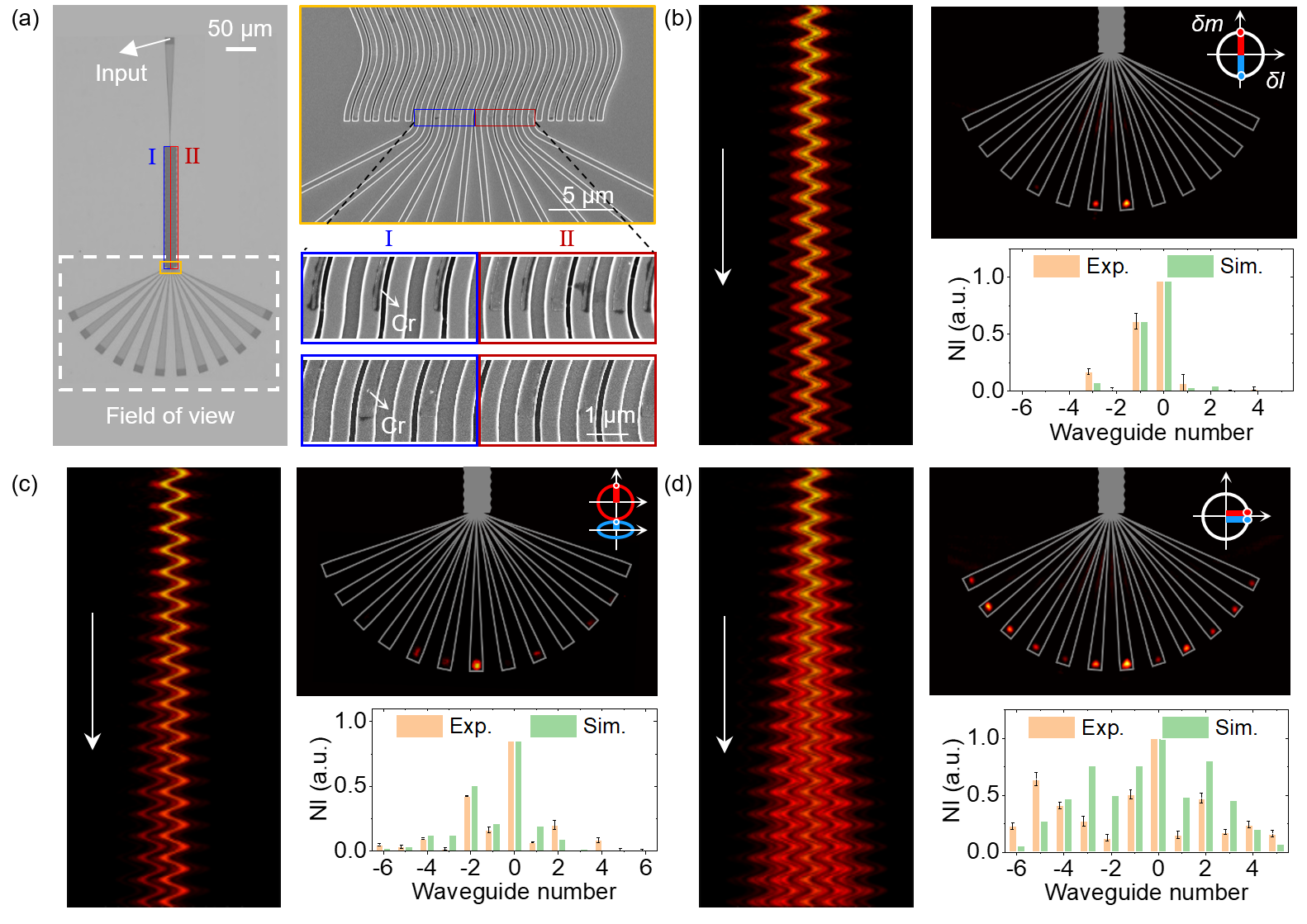Introduction:
Recently, research group led by Prof. Tao Li’s and Prof. Shining Zhu’s from College of Engineering and Applied Science, Nanjing University, incorporated with Luqi Yuan’s group from Shanghai Jiao Tong University, and made an important progress in non-Hermitian topological photonics. They utilized the non-Hermitian degree of freedom as a new synthetic dimension, discovered the influence of non-Hermitian order on manipulating the topological light field, and demonstrated the high-dimensional non-Hermitian Weyl interface state in one-dimensional silicon waveguide array in experiment. The manuscript entitled Observation of Weyl Interface States in Non-Hermitian Synthetic Photonic Systems is published on Phys. Rev. Lett. 130, 043803 (2023). Prof. Tao Li and Prof. Luqi Yuan are the corresponding authors of the paper. Dr. Wange Song is the first author.
Background:
In the past decade, the development of topological photonics has successfully opened up a new degree of freedom for light manipulation - topological order, which implies richer optical effects and underlying physical. Recently, the study of high-dimensional topological effects by synthetic dimension has sparked considerable interest. The synthetic dimension has been extended to frequency, mode, time domain, and orbital angular momentum. Compared with the existing construction of synthetic dimensions in the Hermitian systems, the introduction of non-Hermitian parameters will increase the dimension of the system and is expected to form a new topological phase of matter. Specifically, the non-Hermitian synthetic dimensions can be utilized to manipulate the non-Hermitian order of photonic structures.
A Weyl point is a linear degenerate point of in three-dimensional space, which evolves into a Weyl exceptional ring with the non-Hermitian effect. Both Weyl points and rings have non-trivial topological properties that support a topological mode called the Fermi arc surface state. The high-dimensional Weyl physics in optics opens new possibilities for people to design and control the light behaviors, but the interface modes between two independent Weyl lattices remain unexplored due to the difficulty in high-dimensional lattice matching.
Results:
In this work, Song, et al. successfully observed high-dimensional Weyl interface states in a one-dimensional optical waveguide array in a synthetic dimension scheme (Fig. 1). In the design and experiments, strips of chromium (loss) on the silicon waveguide were introduced as the non-Hermitian components, which gives rise to a Weyl exceptional ring in the band structure in the synthetic dimensions. By selecting Weyl structures in the 3D synthetic parametric sphere, an interface can be constructed, which supports different types of Weyl interface states in such complex synthetic parameter space. Specifically, the researchers observed an interface mode with sign-reversed imaginary mass, corresponding to reversed non-Hermitian order, which is described by a non-Hermitian topological invariant called vorticity. In addition, the researchers further discovered an interface state induced by phase transitions crossing the Weyl exceptional ring, which is caused by the nontrivial topological charge of Weyl exceptional rings.
In experiments, by carefully modulating the loss arrangement in the silicon waveguides, new Weyl interface states were successfully observed in optical regime (Fig. 2). They significantly originate from the non-Hermitian order transition (see Fig. 2b for the reversed “imaginary mass” (non-Hermitian order), and Fig. 2c for the phase transitions crossing the Weyl exceptional ring), which are quite different from many previous interface modes caused by the topological order transition. This work exploits the non-Hermitian modulation as a new degree of freedom in the synthetic dimension and enriches the topological physics, which would possibly stimulate more interesting phenomena beyond this.
The referees of this paper believe-“The story of this paper is clear and convincing, and the experimental structures are simply beautiful…Viewing the non-Hermitian perturbation as a new degree of freedom in the parameter space is intriguing…Deeper dive into this direction may reveal more interesting phenomena beyond this paper.” This research is supported by the National Key R&D Program of China, the National Natural Science Foundation of China, Dengfeng Project B of Nanjing University.
Link of the paper:https://journals.aps.org/prl/abstract/10.1103/PhysRevLett.130.043803
Quick view of the images:

Figure 1. Schematics of non-Hermitian Weyl interface states.

Figure 2 Experimental results. (a) SEM of the fabricated samples. Simulation and experimental results for the imaginary mass transition case (b), crossing the WER case (c), and Hermitian trivial case (d).
(Submitted by Tao Li’s Group)

